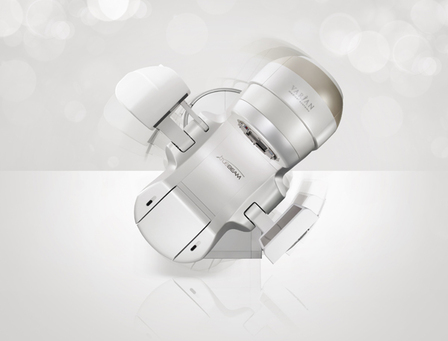
Detailed experiences of stereotactic ablative body radiotherapy (SABR) treatments using Varian’s TrueBeam medical linear accelerator and Calypso “GPS for the Body” tumour-tracking technology were discussed at the annual European Society for Radiotherapy and Oncology (ESTRO) Forum (19–23 April 2013, Geneva, Switzerland) at the Varian Emerging Technologies Symposium.
Suresh Senan, radiation oncologist at VU University Medical Center (VUMC) in Amsterdam, the Netherlands, presented a systematic review into published outcomes of lung SABR treatments for central lung tumours at multiple cancer centers globally. “This systematic review shows that SABR achieves high local control with limited side effects, even for central lung tumours,” he said.
Senan also provided details of treatments at VUMC, where more than 1200 stage 1 lung tumour patients have been treated in the last ten years using SABR. The clinic treats patients on eight Varian linear accelerators, including four TrueBeam devices. Since 2008, all lung SABR treatments at VUMC have been delivered using Varian’s RapidArc technology, many on the TrueBeam system. According to Senan, the main benefit of RapidArc for lung patients is the shorter treatment time with less risk of motion.
“This is especially important for SABR, where high doses are delivered over fewer treatment sessions,” he said. “With the introduction of TrueBeam technology, the integration between imaging and treatment delivery has been improved. Furthermore, delivery of the highest SABR doses using the High Intensity Mode for lung tumours has reduced treatment delivery times to less than four minutes.”
Parag Parikh, assistant professor of radiation oncology at Washington University in St Louis, USA, detailed the results of an ongoing clinical trial using Calypso Anchored Beacon transponders in lung cancer patients. The trial is primarily intended to evaluate tumour localisation with the Calypso system for patients with implanted anchored transponders and to assess the positional stability of the transponders throughout the treatment process. “The data we have gathered so far shows that the implantation is safe and that there is very little migration of the markers,” said Parikh.
The Varian symposium was chaired by Marta Scorsetti, director of radiotherapy and radiosurgery at the Humanitas Cancer Center in Milan, Italy, where more than 300 lung cancer patients have been treated using a TrueBeam treatment machine since its installation in July 2010, according to a company release.
The symposium commenced with Philippe Lambin, head of radiation oncology at the MAASTRO Clinic in Maastricht, The Netherlands, outlining the need for software-based “Decision Support Systems” (DSS) to allow individualised treatments.
Such systems, he said, are particularly valuable because of the huge volume of information that the modern clinician needs to assess. “With the help of DSS, doctors are able to more objectively select the best individualised treatment,” said Lambin. “By utilising a system which not only integrates all diagnostic information and therapeutic options but also takes into account the wishes of the patient, it’s easier for medical professionals to propose tailor-made treatment plans to patients.”













